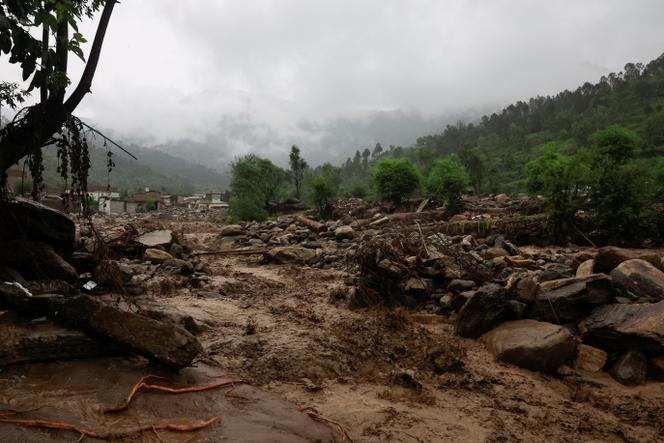In Pakistan, rain prevents rescuers from finding missing people after extreme monsoon
Fresh downpours are still preventing rescuers from digging out dozens of bodies from the mud on Monday, August 18, still buried after an extreme monsoon that killed nearly 350 people in northern Pakistan. According to authorities, nearly 200 residents of dozens of disaster-hit villages are still missing.
But since the rescue operations began, the rescuers' task has only grown more complicated. On Friday, severe weather caused a government helicopter to crash in Khyber Pakhtunkhwa, the province hardest hit by the deadly rains, with more than 320 deaths, dozens more injured, and damage that could leave hundreds of families without homes, schools, and public services, possibly for months.
The trouble could only be beginning, warn the authorities, as the rains will intensify further over the next two weeks and the heat – typical of the summer monsoon – remains high, raising fears of the development of bacteria and epidemics, while stagnant water is synonymous with a wave of dengue fever in Pakistan every year.
But delivering aid will be complicated, as a senior official with the Khyber Pakhtunkhwa Disaster Management Authority explains. "Alternative roads designed to access steep villages have also just been washed away by the rains," and "the meteorological department is anticipating more flash floods until Thursday."
A monsoon of “particular intensity”
The neighboring region of Gilgit-Baltistan already experienced this backlash a week ago: seven volunteers were killed and six others injured, buried under a mudslide while trying to connect their mountain village to the water network damaged by flash floods three weeks earlier.
Although the monsoon has been particularly deadly in recent days, it began at the end of June. According to the authorities, it has since killed more than 650 people, including around 100 children, with an "intensity this year 50 to 60% higher than last year." At least 60 victims have also been recorded in Indian-administered Kashmir.
The major floods of 2010 and 2022 have only heightened the concerns of Pakistan's 255 million people, who are seeing extreme weather events on the rise. The country, one of the world's most vulnerable to the effects of climate change, is seeing a succession of massive and deadly floods, glacial lake outbursts, and unprecedented droughts each season.
The World with AFP
Contribute
Reuse this contentLe Monde




